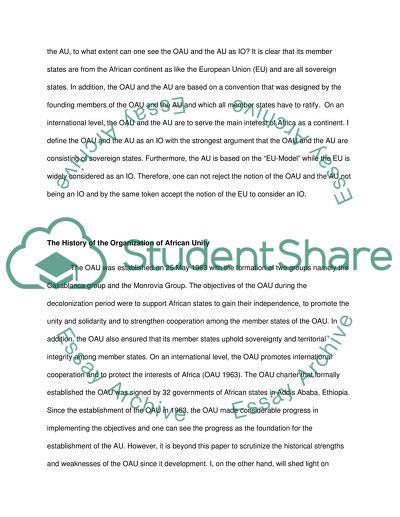Cite this document
(The African Union as an International Organization, from OAU to AU Research Paper, n.d.)
The African Union as an International Organization, from OAU to AU Research Paper. Retrieved from https://studentshare.org/politics/1522776-write-on-oau-organaisation-of-african-unity-providing-a-summarry-of-the-main-rationalepurposeand-objectives-of-the-organaisation-and-include-a-description-o
The African Union as an International Organization, from OAU to AU Research Paper. Retrieved from https://studentshare.org/politics/1522776-write-on-oau-organaisation-of-african-unity-providing-a-summarry-of-the-main-rationalepurposeand-objectives-of-the-organaisation-and-include-a-description-o
(The African Union As an International Organization, from OAU to AU Research Paper)
The African Union As an International Organization, from OAU to AU Research Paper. https://studentshare.org/politics/1522776-write-on-oau-organaisation-of-african-unity-providing-a-summarry-of-the-main-rationalepurposeand-objectives-of-the-organaisation-and-include-a-description-o.
The African Union As an International Organization, from OAU to AU Research Paper. https://studentshare.org/politics/1522776-write-on-oau-organaisation-of-african-unity-providing-a-summarry-of-the-main-rationalepurposeand-objectives-of-the-organaisation-and-include-a-description-o.
“The African Union As an International Organization, from OAU to AU Research Paper”, n.d. https://studentshare.org/politics/1522776-write-on-oau-organaisation-of-african-unity-providing-a-summarry-of-the-main-rationalepurposeand-objectives-of-the-organaisation-and-include-a-description-o.


